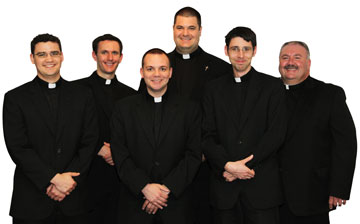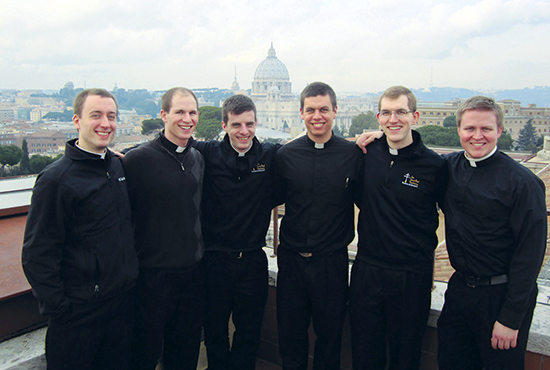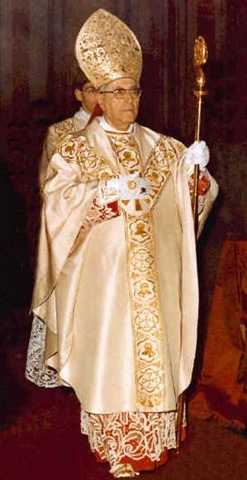1906-1989) SIGUE VIGENTE:l.- LA OPINIÓN SUSTITUYE A LA VERDAD

Lo más grave es que hay una técnica para sustituir la verdad por la opinión. Esa técnica existe y es socorridísima: basta dar una ojeada a la actual producción religiosa, literaria, filosófica. Se trata de expresar opiniones tan cautelosamente formuladas, que es imposible saber cuál es la tesis del autor; o mejor aún: se yuxtaponen unas a otras, como si fueran mutuamente compatibles, doctrinas que son entre sí contradictorias.
l.- LA OPINIÓN
SUSTITUYE A LA VERDAD
La primera y fundamental doctrina del poder de este mundo es la afirmación: la verdad no existe. Ya decía San Agustín que la diferencia entre la ciudad del mundo y la ciudad de Dios se finca en que la primera tiene mil opiniones, y la segunda, una sola verdad. La diferencia capital entre las dos ciudades, no versa, por tanto, sobre el contenido, sino sobre la misma existencia de la verdad. Basta recordar el dramático diálogo entre Jesús y Pilatos.
Lo más grave es que hay una técnica para sustituir la verdad por la opinión. Esa técnica existe y es socorridísima: basta dar una ojeada a la actual producción religiosa, literaria, filosófica. Se trata de expresar opiniones tan cautelosamente formuladas, que es imposible saber cuál es la tesis del autor; o mejor aún: se yuxtaponen unas a otras, como si fueran mutuamente compatibles, doctrinas que son entre sí contradictorias.Continua a leer...
Fr U.M. Lang on Cardinal Giuseppe Siri: The Splendour of Liturgical Ceremonial and its Relationship to the Faith .Cardinal Siri insisted the supernatural character of the sacred liturgy, because the celebration of the sacraments is intimately linked to divine revelation.

In keeping with the encyclical Mediator Dei of Pius XII and the Constitution Sacrosanctum Concilium, Siri stressed that the liturgy is the action of Christ the High Priest (...) Therefore "the divine liturgy is stimulus, source, and cause of the supernatural spirit and life" in the soul of the faithful. The worship of God is "the prime act to which men are bound (...) and the prime ordinary instrument for the salvation of souls (...) with the divine liturgy, especially if understood and followed, everything is sanctified and elevated." "Solemnity – he said in 1981 - wants to realize the great even in the small, the decorous in the miserable, the harmonious even in the storm, dignity even in the humble." Solemnity is also the foundation of sacred art and sacred music."For the Church the liturgy was its breath, for the Church the liturgy achieved the great spiritual unity, within it the adopted children of God felt united and connected." In its action of adoration and praise to God, the Church is joined with the communion of saints, celebrating the heavenly liturgy in the presence of God. Participation in the choir of the Heavenly Jerusalem is manifested especially in the Divine office, which was always very dear to Siri. The cardinal archbishop of Genoa considered the celebration of vespers an element of the sanctification of the Lord's Day and the celebrations of the liturgical year, encouraging the faithful to participate.
The following article was written by Fr. Uwe Michael Lang for the Vatican paper, L'Osservatore Romano, and was originally published in Italian.
These excerpts from that original piece came via the Italian blog, Tu es Petrus and are presented here in an NLM translation.
These excerpts from that original piece came via the Italian blog, Tu es Petrus and are presented here in an NLM translation.
The Splendour of the Ceremonial helps show forth the Truth
12 September 2008
by Fr. Uwe Michael Lang
To understand the thinking and action of Cardinal Giuseppe Siri upon the sacred liturgy, one must return to his years of training as a seminarian and as a young priest in Genoa . In the first half of the twentieth century, the metropolis of Liguria emerged as an important centre for the Liturgical Movement. In 1903, Archbishop Edoardo Pulciano in Genoa began teaching liturgy as a separate discipline. In 1914, there was founded the "Liturgical Review" (Rivista Liturgica), a joint project of the abbeys of Finalpia in Savonese, and Praglia. The presentation of the new journal stated its purpose was to study and explain the sacred liturgy to both the clergy and faithful as "public worship that the Church makes to God. Contine to read...
Card.Siri concepiva la liturgia come l’espressione visibile della fede (…) Per il cardinale l’importanza del culto non può essere sovrastimata, perché esso “rappresenta per la maggior parte degli uomini nella gran parte della vita la principale sorgente, spesso l’unica, della fede conservata, della grazia di Dio, della speranza eterna”, come osserva in una lettera pastorale al clero dell’arcidiocesi nel 1977. Quindi la ”custodia dell’ortodossia della fede implica l’accurata custodia dell’ortodossia nella liturgia”.
Lo splendore del rito aiuta a vedere la verità
Per comprendere il pensiero e l’azione del cardinale Giuseppe Siri nell’ambito della sacra liturgia bisogna riandare ai suoi anni di formazione come seminarista e come giovane sacerdote a Genova. Nella prima metà del Novecento la metropoli della Liguria emerse come importante centro di movimento liturgico. Nel 1903 l’arcivescovo Edoardo Pulciano iniziò nel seminario genovese l’insegnamento di liturgia come disciplina distinta da quella delle rubriche. Nel 1914 venne fondata la “Rivista Liturgica”, un progetto congiunto delle abbazie di Finalpia, nel savonese, e di Praglia. Nella presentazione della nuova rivista si indicava come scopo quello di studiare e spiegare sia al clero sia ai fedeli la sacra liturgia, quale “culto pubblico che la Chiesa a rende a Dio”.Continua a leggere...






Sem comentários:
Enviar um comentário